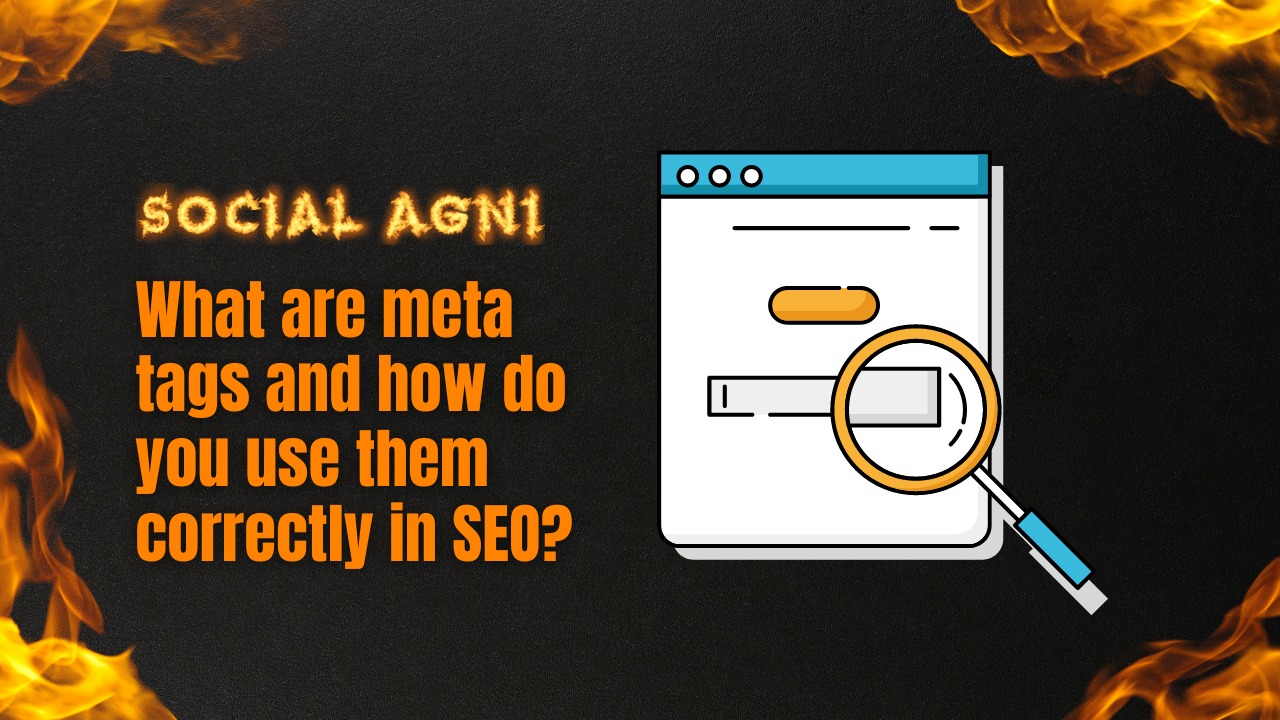Local SEO is essential for small businesses in today’s competitive digital environment. To attract local customers, small companies must maximize their internet presence. Local SEO tools are crucial. Local SEO solutions help small companies increase their online presence, search engine rankings, and focused visitors. These programs can handle local listings, keywords, citations, reviews, and competitors. GMB is a popular local SEO tool. GMB helps companies become listed in local search results via Google Maps. Businesses may enhance their chances of appearing in the “Local Pack” and attracting local clients by improving their GMB profiles with correct and up-to-date information. Local SEO tools include Moz Local. Businesses can manage their web listings across directories and platforms using Moz Local to ensure consistency. Search engines trust businesses that have consistent NAP (name, address, phone number) data across directories. Another top local SEO tool, Yext, lets companies manage their internet listings, monitor feedback, and interact with consumers. Yext helps companies ensure their information is correct and consistent across several directories, improving their local search results. BrightLocal tracks local search rank, builds citations and monitors reviews. Businesses may attract more clients by checking their local search rankings and developing citations on trusted directories. Local SEO tools like Whitespark develop local citations and manage reputations. Citations—website references of a business’s name, address, and phone number—impact local search rankings. Whitespark helps firms obtain relevant citations and manage their internet reputation. SEMrush, a popular SEO tool, supports local SEO. It lets companies analyze local keywords, enhance website content for local searches, and track local search results. Businesses may attract local clients by optimizing their websites for local keywords. Ahrefs, known for backlink analysis, has local SEO functions. Ahrefs can assess rivals’ backlinks, find link-building possibilities, and reveal competitor strategies. Businesses may improve local SEO by monitoring backlinks and analyzing competitors. Local SEO checklists provide a methodical approach. Local SEO checklists help companies optimize their websites, listings, and reviews. Businesses may avoid missing important local SEO steps by following a checklist. Raven Tools offers site audits, link building, and keyword research for local SEO. Local search success requires website audits, high-quality backlinks, and keyword targeting. Serpstat delivers keyword research and rank tracking for local SEO. Businesses may keep ahead of the competition by monitoring local search trends and keyword rankings. Google My Business Google My Business (GMB) helps businesses maintain their web presence and rank high in local search results and Google Maps. Its features and benefits can boost a small business’s visibility and consumer base. GMB lets companies construct a thorough profile including their name, address, phone number (NAP), website, hours of operation, and product or service descriptions. This information displays in Google’s Knowledge Panel when consumers search for relevant businesses, improving their chances of acquiring clients. Optimizing GMB profiles boosts local search results for companies. Google shows the “Local Pack”—a prominent area highlighting three local businesses—when consumers search for terms related to their business and region. GMB ensures accurate and consistent information to help companies appear in the Local Pack and be chosen by customers.\ GMB lets companies respond to client evaluations and ratings. Trust and trustworthiness from positive reviews and ratings might sway potential buyers. GMB engagement shows good customer service and can boost repeat business and word-of-mouth. GMB connects easily with Google Maps, allowing companies to appear in map searches. It helps customers obtain directions, photographs, and other critical information right from the map, making it especially useful for businesses with physical locations. Google Maps helps local businesses get clients. GMB lets companies publish and update their profile in search results. Special discounts, events, product updates, and other pertinent information can be posted. Businesses may increase website traffic and conversions by consistently posting entertaining and helpful content. GMB gives excellent data and statistics regarding user profile interactions. GMB dashboards let businesses measure views, searches, and activities like website visits and phone calls. These insights help firms understand their audience, gauge strategy efficacy, and make data-driven decisions. Moz Local Moz Local is a comprehensive local SEO tool that helps companies boost their online presence across directories and platforms. It has tools to boost local search visibility and attract local consumers. Local Listing Management: Moz Local helps companies manage their listings on Google, Facebook, Yelp, and more. Businesses may standardize NAP data across listings using Moz Local. Consistency helps search engines trust and confirm a business’s information, improving local search rankings. Listing Distribution: Moz Local’s Listing Distribution function distributes companies’ NAP data uniformly throughout directories, data aggregators, and web platforms. This automates updating and disseminating business information to relevant web directories, enhancing local search exposure. Review Monitoring: Moz Local lets companies respond to customer reviews across platforms from a single dashboard. Tracking customer reviews helps firms respond to bad evaluations and communicate with pleased consumers. Actively managing reviews build trust and credibility, affecting potential consumers’ image of the organization. Local Search Analytics: Moz Local analyzes local search performance for businesses. It shows how clients are discovering the business, which directories are most visible, and their search rankings over time. These insights assist organizations understand local SEO, discovering areas for development, and making data-driven decisions to enhance their strategy. Online Presence Score: Moz Local rates firms’ online presence. This score incorporates NAP data correctness and consistency, online review quantity and quality, and company information completeness. Businesses use the Online Presence Score to evaluate their local SEO and prioritize online visibility improvements. Local SEO Audit: Moz Local analyzes a business’s local SEO performance. It optimizes on-page SEO, website performance, mobile-friendliness, and more. Businesses may improve their website’s local search visibility and user experience by implementing audit suggestions. Yext Businesses can manage their web listings, customer feedback, and audience engagement with Yext, a strong local SEO tool. Yext enhances local search visibility and ensures accurate and consistent company information across numerous directories and platforms with a wide range of features and functions. Business Listing Sync: Yext’s Business Listing Sync lets companies maintain and update their NAP data across
Keyword research plays a crucial role in the success of any blog or website. By identifying the proper keywords, bloggers can optimize their content for search engines like google and yahoo and appeal to extra natural site visitors. However, manually undertaking key-word studies can be time-ingesting and challenging. Thankfully, there are several key-word studies gear and extensions available that may streamline this procedure and provide valuable insights. In this article, we will explore the 13 best keyword research tools and extensions for bloggers. Google Keyword Planner Google Keyword Planner is an effective and extensively used keyword studies device that is critical for bloggers. It gives precious insights into key-word seek volume and competition. By entering a keyword or a listing of key phrases, bloggers can discover new keyword thoughts and apprehend their potential performance. The tool also affords facts on the recommended bid amounts for paid advertising, enabling bloggers to make knowledgeable choices concerning their advertising price range. Google Keyword Planner is an awesome place to begin for bloggers seeking to optimize their content for search engines. SEMrush SEMrush is a complete SEO suite that goes past key-word research. It offers quite a number features designed to assist bloggers enhance their general search engine marketing method. With SEMrush, bloggers can conduct in-intensity key-word analysis, competitor studies, and even track their website’s performance in seek rankings. The device gives precious insights into keyword trouble, seek extent, and tendencies, permitting bloggers to become aware of the most treasured keywords to target. Ahrefs Ahrefs is every other famous and effective device that offers a huge range of search engine optimization functions, such as complete keyword research. Bloggers can use Ahrefs to explore key-word ideas, examine, seek volume, and examine the opposition. The tool gives detailed metrics such as keyword trouble, click-thru rates, and one way link profiles. Bloggers also can tune their internet site’s rankings for precise keywords and benefit from insights into their competitors’ strategies. Moz Keyword Explorer Moz Keyword Explorer is a person-friendly tool that simplifies the keyword studies process for bloggers. It presents precious keyword guidelines and helps bloggers prioritize their content material strategy. The device offers insights into keyword problems, natural click-via charges, and ability seek extent. Bloggers can also discover related topics and inquiries to apprehend what their audience is trying to find. Moz Keyword Explorer’s intuitive interface and complete facts make it an amazing desire for bloggers of all stages of information. Soovle Soovle is a unique keyword research tool that generates keyword suggestions from multiple search engines and platforms, including Google, Bing, Yahoo, YouTube, Amazon, and more. It gives a holistic view of popular seek terms throughout these systems, allowing bloggers to find keyword ideas that can be overlooked by different gear. Soovle’s capacity to offer insights from various assets makes it a precious tool for bloggers looking for a complete key-word research method. Jaaxy Jaaxy is a popular keyword research tool that offers bloggers a wealth of insights and data to optimize their content for search engines. With Jaaxy, bloggers can uncover high-performing keywords with low competition, helping them rank higher in search engine results and attract targeted organic traffic. The tool provides valuable information such as search volume, competition level, and potential traffic for each keyword. Additionally, Jaaxy offers features like the SiteRank tool, which allows bloggers to track their website’s rankings for specific keywords and monitor their progress over time. KeywordTool.Io KeywordTool.Io is an effective keyword research tool that generates keyword recommendations based on Google Autocomplete. It gives a listing of lengthy-tail key-word ideas that bloggers can goal to attract more precise and targeted site visitors. The tool gives search volume statistics and facilitates bloggers to identify less competitive key phrases to increase awareness on. With KeywordTool.Io, bloggers can discover untapped possibilities and tailor their content to satisfy the desires of their target market more successfully. AnswerThePublic AnswerThePublic takes a unique approach to keyword research by generating keyword ideas in the form of questions, prepositions, and comparisons. It helps bloggers understand what their target audience is searching for and allows them to create content that directly addresses those queries. By answering these questions and providing valuable information, bloggers can attract more organic traffic. AnswerThePublic also helps bloggers identify content gaps and discover new topic ideas to engage their audience. Keywords Everywhere Keywords Everywhere is a famous browser extension that simplifies keyword studies through providing precious statistics at once on search engine effects pages (SERPs). This convenient device displays seek volume, cost-in keeping with-click (CPC), and opposition records for keywords, permitting bloggers to quickly investigate the capacity price of a keyword. By presenting real-time facts even as browsing, Keywords Everywhere eliminates the want for separate keyword research tools and streamlines the process for bloggers. SEOquake SEOquake is a flexible browser extension that offers complete search engine optimization analysis, consisting of key-word research. Alongside standard metrics like search volume and competition, SEOquake affords additional insights together with keyword density and the variety of listed pages for a particular keyword. Keyword Surfer Keyword Surfer is a loose Chrome extension that provides keyword information without delay in seeking effects. By definitely coming into a search query, bloggers can get entries to seek volume, related key phrases, or even on-web page search engine marketing facts. This up-to-date facts empowers bloggers to tailor their content material based totally on famous and applicable keywords, in the long run enhancing their chances of ranking better in seek engine outcomes. SpyFu SpyFu is an advanced key-word research tool that lets bloggers gain precious insights into their competition’ maximum worthwhile key phrases. By studying competitor statistics, bloggers can discover new key-word possibilities and develop techniques to outperform their opponents. SpyFu offers complete records on organic and paid seek techniques, consisting of historic rating records, ad copies, and ad spend. Serpstat Serpstat is a sturdy SEO tool that gives a comprehensive suite of features, such as keyword studies, competitor analysis, and rank monitoring. Bloggers can utilize Serpstat to uncover treasured key-word insights, examine
In the ever-evolving world of search engine optimization (SEO), there is an ethical approach known as “White Hat SEO.” Unlike its counterpart, “Black Hat SEO,” which employs unethical tactics to manipulate search engine rankings, White Hat SEO focuses on organic and sustainable strategies. This article aims to shed light on the White Hat SEO method and its importance in helping websites rank high in search engine results pages (SERPs) while staying within legal boundaries. Understanding White Hat SEO White Hat search engine optimization encompasses a wide range of strategies and practices aimed toward enhancing a website’s visibility and scores via ethical means. Central to this technique is the creation of terrific content material that caters to the wishes and pastimes of the target audience. White Hat practitioners invest time and effort in conducting thorough key-word studies to perceive relevant subjects and search phrases. By informing the reason behind user queries, web sites can create informative and tasty content that offers treasured insights, answers questions, or offers solutions. This content material isn’t only optimized with suitable key phrases however is likewise nicely-established, well formatted, and clean to study. Furthermore, White Hat search engine marketing emphasizes the significance of originality and specialty. Plagiarism or duplicating content material from other resources is strongly discouraged. Instead, web sites are recommended to offer clean views, progressive ideas, and unique research. By generating true and compelling content, websites can attract organic traffic, increase user engagement, and encourage social sharing. Valuable content material clearly garners one way links from other respectable web sites, further enhancing the website’s authority and credibility. Ultimately, the focal point on brilliant content material guarantees that the internet site affords real price to its traffic, mainly to lengthy-time period achievement and sustained scores in seek engine effects. Creating High-Quality Content White Hat SEO locations a giant emphasis on content advent as a fundamental pillar of successful optimization. Websites that aim to rank high in search consequences ought to offer valuable, informative, and attractive content that addresses the wishes and hobbies in their audience. This calls for a deep know-how of the goal market, their pain points, and the subjects they are actively attempting to find. To create notable content, White Hat practitioners make investments time in accomplishing complete studies on the selected topic. They examine existing content material to pick out gaps or areas that may be accelerated upon. By supplying fresh perspectives, particular insights, and thorough insurance of the concern, remember, web sites can function themselves as authoritative sources of statistics. The content has to be properly-written, established, and optimized for each user and engines like google. White Hat SEO practitioners strategically comprise applicable keywords into the content without sacrificing readability or coherence. They use headings, subheadings, bullet points, and other formatting strategies to beautify the clarity and enterprise of the content material. Additionally, they make certain the content material is visually appealing, incorporating pics, movies, infographics, and other multimedia elements when suitable. By consistently handing over notable content material, web sites can appeal to natural visitors, inspire consumer engagement, and establish themselves as treasured assets inside their niche. Moreover, as search engines increasingly prioritize personal pride and relevance, websites that continuously offer valuable content are more likely to acquire better rankings and hold their positions over time. Optimizing Website Structure and Navigation White Hat search engine marketing acknowledges the significance of a well-structured website with intuitive navigation to beautify each person revel in and seek engine crawlability. A website’s structure and navigation at once affect how without problems customers can find information and how engines like google interpret and index the content. To optimize website structure, White Hat practitioners consciousness on organizing content material in a logical and hierarchical way. They make sure that each web page has a clear purpose and is accurately labeled. This includes the usage of descriptive and key-word-rich meta tags, consisting of identify tags and meta descriptions, which should reflect the content material of the page. By optimizing those factors, websites provide concise and informative snippets in search engine consequences, attracting users to click through. In addition to meta tags, White Hat search engine marketing practitioners are aware of header tags (H1, H2, and so forth.) to shape content successfully. By using appropriate header tags, web sites establish a clear hierarchy and make it simpler for both users and search engines like google and yahoo to recognize the relevance and context of every segment. Building Quality Backlinks Building excellent one way links from authoritative and applicable websites is a middle issue of White Hat search engine marketing. Unlike Black Hat techniques that contain buying links or undertaking hyperlink schemes, White Hat practitioners prioritize income backlinks through genuine and moral means. One powerful method for acquiring backlinks is through guest blogging. By collaborating with reputable web sites inside the identical industry or niche, web sites can contribute treasured content material that consists of a hyperlink returned to their personal website. This not simplest exposes the internet site to a wider audience however additionally establishes credibility and authority within the enterprise. Another technique is to create link-worthy content that evidently draws inbound links. By producing specific, precious, and shareable content material, web sites increase the likelihood of different internet site owners and influencers linking to their content as a reference or useful resource. This could be within the shape of complete publications, original studies, insightful case research, or concept-provoking opinion pieces. Engaging with industry influencers, concept leaders, and relevant groups is another powerful way to construct fine one-way links. By actively taking part in discussions, contributing valuable insights, and establishing relationships, web sites can entice the attention of influential people or web sites who may additionally ultimately hyperlink returned to their content. Prioritizing User Experience Prioritizing user enjoyment is a vital issue of White Hat search engine marketing that performs a substantial role in attaining better search engine scores and overall website achievement. User experience encompasses different factors that impact how site visitors interact with an internet
Schema Markup” is a buzzword in SEO. Schema markup might be confusing for SEO beginners, but don’t worry! This easy-to-understand tutorial will help you improve your website’s visibility and performance with schema markup. Schema markup, exactly? Schema markup is a structured data language that helps search engines analyze your website content. It enhances search results by adding context and metadata to your web pages. Schema markup improves SEO by increasing search engine presentation. Schema markup may give search engines specific information about your business, goods, content, and more. This information enhances search results.Schema.org, endorsed by Google, Bing, Yahoo, and Yandex, promotes schema markup. Webmasters may use Schema.org to mark up their content to help search engines comprehend and index it. Schema markup is complicated, yet it has many benefits. Rich snippets, knowledge graphs, and other aesthetically appealing search results may make your website stand out. Schema markup provides more complete and correct information upfront, improving the user experience. This tutorial covers schema markup basics. We’ll explain how it works, examine popular schema markup kinds, offer implementation suggestions, and recommend best practices to improve your schema markup efforts. Let’s use schema markup to boost your website’s visibility and organic traffic! I. What is Schema Markup? Schema markup adds metadata to your website’s content. It helps search engines comprehend your website’s content by using consistent language or tags. This markup language helps search engines properly learn data and deliver it in more functional and visually appealing search results. Schema.org, a collaboration between Google, Bing, Yahoo, and Yandex, manages the schema markup vocabulary. Webmasters may classify and organize information using its extensive schemas. Schema markup helps search engines understand your content’s kind, purpose, and relationships. This lets search engines build rich snippets, knowledge graphs, and other improved search results for a more meaningful and relevant search experience. Take a recipe blog. Schema markup tells search engines that a component of your material is a recipe, including cooking time, ingredients, and nutritional information. This lets search engines present your recipe with a rich excerpt, including a thumbnail image, rating, and cooking time, making it more appealing to visitors. Schema markup uses microdata, JSON-LD, and RDFa. These formats let you insert schema markup straight into HTML code to help search engines analyze and categorize your content. Schema markup improves search engines’ understanding and display of your website’s content. Schema markup improves website exposure, attracts targeted visitors, and provides a more informative and engaging user experience. II. Understanding Schema.org: Google, Bing, Yahoo, and Yandex collaborate on Schema.org to standardize schema markup. It is the authoritative source for schema markup for websites. Purpose of Schema.org: Schema.org defines entities and their properties using a large library of schemas, or structured data types. These schemas include organizations, events, goods, publications, recipes, local businesses, and more. Webmasters can label and organize material using these schemas to help search engines comprehend it. Types of Schemas: Schema.org has several schemas for different content demands. Common schemas include: Organization: This schema contains an organization’s name, logo, contact information, and social media accounts. It helps search engines display correct business information. LocalBusiness: This schema lets local companies provide their address, phone number, opening hours, and customer feedback. It boosts local search results and company visibility. Product: The product schema lets you provide product name, description, price, availability, and customer reviews. It showcases your items with rich snippets and aids shopping searches. Article: The article schema lets you format news articles, blog entries, and other written material using attributes like headline, author, publication date, and article body. Search results show your articles better with this structure. Recipe: Recipe schema is for recipe websites. It lets you enter ingredients, cooking time, nutritional details, and step-by-step directions. This format lets search engines provide rich excerpts of your recipes, enticing additional consumers. Extensibility: Schema.org supports additional schema types and features as content types develop. Webmasters may adjust schema markup to their content demands with this flexibility. Documentation and Resources: Schema.org contains extensive schema markup documentation, examples, and recommendations. Webmasters may learn about schema types and use code snippets to appropriately apply markup. Schema markup can also be validated. Webmasters may increase their website’s exposure, search engine comprehension, and user-friendly search results by using Schema.org’s large schema library. Schema markup on web pages requires understanding and using Schema.org. III. How Schema Markup Works: Schema markup adds structured data to HTML code to provide information context and purpose. This markup helps search engines analyze the data. Microdata, JSON-LD, and RDFa implement schema markup. Discussing each method: 1. Microdata: HTML5 allows you to incorporate schema markup directly into HTML code using microdata. HTML attributes determine the schema type and content characteristics. HTML elements can define characteristics and values using the “itemprop” property. Headings, paragraphs, pictures, and links are often tagged with microdata. Microdata example: 2. JSON-LD: JSON-LD is a common schema markup approach. It requires adding a script element to the HTML code with a schema markup JavaScript object. JSON-LD markup in the script tag provides schema type, attributes, and values. Since it separates schema markup from HTML content, JSON-LD is versatile and straightforward to deploy. 3. RDFa: Another way to add schema markup to HTML is RDFa. It supports schema attributes in HTML tags. RDFa features include schema type and content properties. Using HTML characteristics like “property” and “typeof,” RDFa defines schema markup. RDFa example: No of the solution, your schema markup must appropriately describe your web pages’ content. Each schema type requires unique information. To appropriately apply schema markup for your content, consult Schema.org’s instructions and recommendations. Google’s Structured Data Testing Tool is essential for validating schema markup on websites. This ensures search engines properly comprehend schema markup. Schema markup employing microdata, JSON-LD, or RDFa helps search engines comprehend your material, resulting in rich snippets, knowledge graphs, and improved search results. IV. Popular Schema Markup Types: Schema markup supports a variety of content and industry kinds. Schema types improve search engine results. Schema markup types: Organization Schema: The
Search Engine Optimization (SEO) performs a critical position in improving a website’s visibility and driving natural visitors from engines like google. While moral and sustainable search engine marketing practices are extensively recommended, there’s an alternative method called Black Hat SEO. This article targets to provide a brief creation to Black Hat search engine optimization, discussing its definition, techniques, and ability risks. However, it is essential to notice that undertaking Black Hat SEO practices goes against search engine pointers and may result in severe results on your internet site’s on-line presence. Understanding Black Hat search engine optimization Black Hat SEO refers back to the unethical and manipulative strategies used to enhance a internet site’s seek engine ranking, often on the price of user experience and seek engine guidelines. The goal of Black Hat SEO practitioners is to take advantage of loopholes in search engine algorithms to gain an unfair gain over competitors and attain higher scores. Black Hat search engine marketing strategies are designed to deceive search engines like google and yahoo by manipulating different factors that influence seek engine rankings. These techniques often prioritize seek engine algorithms over the desires and expectancies of customers. While they will supply short-term effects, they’re considered unethical and can bring about excessive consequences for a website’s online presence. Black Hat search engine marketing Techniques 1. Keyword Stuffing One of the most not unusual Black Hat search engine marketing strategies is key-word stuffing. It includes excessively using key phrases inside the content material, meta tags, and hidden regions of a website to manipulate search engine scores. Practitioners may repeat keywords unnaturally or upload unrelated key phrases to trick search engines like google and yahoo into ranking their website higher. However, this exercise leads to terrible-first-rate content material that offers little cost to users and undermines the user’s enjoyment. 2. Cloaking Cloaking is a deceptive method that involves displaying one of a kind content to search engine crawlers and users. This is accomplished with the aid of detecting the consumer’s IP address or user agent and turning in tailored content material hence. The purpose is to govern serps into ranking a website better based totally on beside the point or misleading content material. For instance, a website would possibly display content related to popular search queries to search engines like google and yahoo but display unrelated or low-excellent content to users. Cloaking no longer handiest violates seek engine guidelines however also deceives customers, leading to a bad consumer enjoyment. 3. Link Farming Link farming is a way in which a network of low-great or irrelevant web sites is created with the sole cause of producing one-way links to a goal website. These web sites regularly have minimal or no valuable content material, and the hyperlinks are inserted as a right for content material price or user relevance. The aim is to govern seek engine algorithms into perceiving the goal internet site as famous and authoritative because of the excessive number of backlinks. However, search engines have become more adept at detecting link farms and have carried out measures to penalize websites engaged in such practices. 4. Hidden Text and Links Hidden textual content and hyperlinks contain embedding keywords or links within a website’s code that are invisible to customers however are nevertheless listed with the aid of engines like google. This technique manipulates seek engine scores without presenting any value to the consumer. Hidden textual content may be achieved through the usage of font shades that match the historical past or with the aid of placing the text size to 0. Hidden hyperlinks may be placed within snap shots or located off-display screen. Search engines bear in mind those practices deceptive and penalize websites that have interaction in such processes. Risks and Consequences Engaging in Black Hat search engine marketing practices carries large dangers and results that may have an adverse impact on an internet site’s visibility and on line popularity. 1. Penalties and Deindexing Search engines continuously update their algorithms to come across and penalize websites the use of Black Hat strategies. When a website is caught employing Black Hat search engine marketing, it is able to get hold of consequences that result in a lower in search engine scores or even complete elimination from seek engine results. Penalties may be guide moves taken by using search engine representatives or algorithmic penalties triggered through automatic detection structures. Reversing these consequences and convalescing a internet site’s ranking and visibility can be a tough and time-eating system. 2. Damage to Online Reputation Black Hat SEO practices can harm the recognition of an internet site and its related brand. Users have become more and more savvy in figuring out manipulative tactics used to misinform engines like google. When customers stumble upon websites with poor-excellent content material, inappropriate information, or misleading strategies, they quickly lose agreement with and confidence in the website and the emblem behind it. This lack of trust will have long-lasting consequences on an internet site’s on-line recognition and credibility. 3. Long-time period Negative Impact The terrible impact of accomplishing Black Hat search engine marketing practices can extend nicely beyond immediate consequences and harm to online popularity. Recovering from consequences and regaining a terrific status in search engine outcomes can be a daunting project. It often calls for a complete method to undo the effects of unethical practices and rebuild consideration with search engines like google. This may additionally involve eliminating or disavowing harmful backlinks, re-optimizing content material to align with seek engine suggestions, and imposing white hat search engine optimization techniques to demonstrate a dedication to moral practices. The system may be time-consuming, and the internet site may additionally experience an extensive decline in natural traffic and visibility all through this period. Moreover, the long-term outcomes of Black Hat search engine optimization can expand beyond search engine consequences. In an era of social media and on-line groups, phrases spread quickly about unethical practices. Users who’ve encountered an internet site making use of Black Hat
In the modern-day digital age, having a strong on-line presence is critical for companies and people alike. Search engine optimization (SEO) performs an enormous role in using natural site visitors to websites, and crafting compelling meta titles and meta descriptions is an essential factor of powerful search engine marketing. In this article, we will explore the important factors of writing a good meta name and meta description that no longer simplest attract seek engine interest however additionally trap customers to click on through and have interaction together with your content material. Understanding Meta Titles A meta name, additionally known as a name tag, holds widespread importance in search engine optimization (search engine optimization) practices as it serves as a critical HTML detail liable for conveying the essence of a web page to each engine like google and users. Appearing as the clickable headline in seek engine outcomes pages (SERPs), a nicely-crafted meta identifier now not simplest captures the eye of capacity traffic however additionally affects click-thru charges and ultimately drives natural traffic in your website. In this segment, we can delve deeper into the intricacies of meta titles, exploring numerous strategies to optimize them successfully. Be concise and precise: When composing a meta title, it’s crucial to strike a sensitive stability among brevity and provide records. Given that engines like google usually display about 50-60 characters of the meta name, it is critical to hold it inside this limit to make certain whole visibility in search consequences. Aim to succinctly and honestly communicate the reason, relevance, and cost proposition of your webpage within this individual constraint. Incorporate applicable key phrases strategically: A thorough expertise of your target market’s seek behavior is important for identifying the maximum applicable and precious key phrases. Conduct comprehensive keyword research to discover the terms and terms customers are probably to enter in search queries. Integrate those strategically selected key phrases evidently and organically into your meta name to decorate its visibility and alignment with personal purpose. However, it’s far essential to keep away from immoderate keyword usage, as engines like google may also penalize such attempts at over-optimization. Generate curiosity and foster engagement: In addition to offering a concise and descriptive meta name, it is critical to ignite interest and inspire user engagement. Consider leveraging language that piques hobby, provokes ideas, or affords a compelling question related to the content of your webpage. By appealing to customers’ herbal interest, you may lure them to click on thru and discover your content in addition, growing the chance of significant engagement. Maintain consistency with web page content: Accuracy and coherence among the meta title and the actual content of the web site are paramount. Misleading or mismatched meta titles can lead to a bad user revel in, dwindled credibility, and extended jump prices. Ensure that your meta name aligns correctly with the records, products, or services customers will come upon upon visiting your website. This alignment builds agreement with, establishes credibility, and encourages users to delve deeper into your internet site. Test, examine, and iterate: Optimization is an ongoing procedure, and constantly refining your meta titles is an essential element of SEO. A/B checking out various iterations of meta titles can provide useful insights into their performance, allowing you to make records-pushed decisions. Analyzing metrics along with click-on-via costs, leap prices, and time spent on web page will enable you to refine and optimize your meta titles for stepped forward visibility, elevated natural traffic, and more suitable user engagement. Crafting Effective Meta Descriptions Crafting and powerful meta description is an important element of optimizing your net pages for serps and attracting capability site visitors. While meta descriptions do now not at once impact search scores, they substantially influence click on-through costs and user engagement. To ensure your meta description sticks out and entices users to click on for your page, consider the following strategies: Keep it inside limits: When writing a meta description, it’s critical to maintain it in the endorsed person limit, normally around 150-160 characters. By adhering to those limits, you make certain that your meta description appears in its entirety in seek outcomes, offering customers with a clear and concise precis of your page’s content material. Summarize the web page content: Your meta description should as it should be and succinctly summarize the content material of your internet page. It ought to offer a glimpse of what users can anticipate to locate if they click through to your internet site. Focus on highlighting the number one topic or reason of the page, emphasizing the key advantages or value it gives to readers. A well-crafted meta description units the right expectancies and encourages customers to explore in addition. Include applicable key phrases: While meta descriptions do not directly impact search ratings, incorporating applicable key phrases on your meta description can assist make stronger the page’s relevance and improve its visibility in search effects. Ensure that the keywords you include accurately mirror the content material of the web page and align with the consumer’s search reason. Use gear like key-word research or search engine optimization software to discover suitable keywords associated with your page’s topic or attention. Highlight specific selling factors: Differentiate your net page from others by means of highlighting its precise promoting factors within the meta description. Identify the factors that make your content material treasured, whether it is the information you provide, the fresh perspective you offer, or the solutions you give. Use the meta description as a possibility to exhibit what units your page aside and why users must click on it. By emphasizing the precise fee your page gives, you boost the chances of attracting customers who’re particularly interested in what you have to offer. Craft a compelling call-to-action (CTA): Incorporating a persuasive name-to-motion in your meta description can extensively impact click-through costs. Encourage customers to take action by using inclusive terms like “Learn greater” & “Discover now” & “Unlock the secrets and techniques,” or “Get started these days”.
Search engine optimization (SEO) has emerged as a critical component of any effective online presence in the ever-expanding digital realm. The visibility and ranking of a website on search engine results pages (SERPs) are improved using a variety of tactics and strategies. Meta tags play a big role among the numerous factors that go into successful SEO. The header portion of a web page contains HTML code snippets called meta tags. They notify search engines about the information on a webpage. Although meta tags are not directly visible to visitors on the website, they are extremely important for how search engines interpret and present the page in search results. Although there are many other kinds of meta tags, the meta title, meta description, and meta keyword tags are the most often used ones (although the latter has become less important in recent years). Each of these tags has a particular function in informing search engines of crucial information. The title of a webpage is determined by the meta title tag, sometimes called the title tag. The clickable headline for it may be found in search results and on browser tabs. To capture visitors’ attention and raise search engine rankings, an optimized meta title tag has to be succinct, captivating, and filled with pertinent keywords. On the other hand, a webpage’s content is briefly summarised in the meta description element. It affects visitors’ decisions to click through to the website since it displays in search results below the meta title tag. Writing an engaging and keyword-rich meta description may have a big influence on click-through rates and boost organic traffic. The meta keyword element is used to provide the pertinent keywords connected to a webpage, however as a result of keyword misuse throughout time, it has lost some of its importance. Search engines now place more emphasis on content analysis and relevancy than they once did on meta keywords. It is essential to adhere to standard practices in order to employ meta tags for SEO properly. This entails carrying out in-depth keyword research to determine the best keywords for each page, creating distinctive and descriptive meta tags for each webpage, ensuring that the meta tags and the content of the page are consistent, and routinely reviewing and updating meta tags based on performance and SEO trends. What are Meta Tags? Search engines and internet browsers may learn more about a web page’s content through meta tags, which are short pieces of HTML code. They are essential to search engine optimization (SEO) because they aid in the correct understanding and categorization of web pages by search engines. An HTML document’s head section is where meta tags are put. Title Meta Tag One of the most crucial meta tags is the meta title tag. In search engine results pages (SERPs) and browser tabs, it serves as the clickable headline and identifies the title of a web page. The meta title tag for your website should be short, descriptive, and include important keywords. It aids in the topic and goal of the website’s understanding for both users and search engines. Tag for meta-description A webpage’s content is briefly summarised in the meta description tag. It acts as a preview of the web page’s content in search results and displays below the meta title tag. Writing an engaging and pertinent meta-description tag can enhance click-through rates by influencing visitors’ choices of which search results to click. Markup Language Previously, keywords pertinent to a webpage were specified in the meta keyword tag. However, because of previous abuse and misuse, search engines no longer assign this tag any weight. Some search engines may still use meta keywords as a signal for relevance, although to a reduced level, even if their influence on SEO has decreased. Meta tags give search engines useful data that helps them more accurately index and rank web pages. The meta tags of a website are examined by search engines as they crawl it to determine the page’s subject, relevancy, and possible keywords. The likelihood that a webpage will show up in relevant search results is increased by properly optimized meta tags. It’s important to remember that using meta tags alone cannot ensure good ranks in search results. They must be supplemented by high-quality content, sound website design, and other SEO strategies. Additionally, different search engines may read meta tags in various ways, making it essential to abide by the best practices and recommendations made by search engine providers. It’s crucial to regularly evaluate and update meta tags by performance and SEO trends. Website owners and SEO experts may increase a webpage’s exposure, draw targeted traffic, and improve the user experience overall by employing meta tags correctly. The Role of Meta Tags in SEO Meta tags educate search engines about a webpage’s content, helping SEO. They assist search engines categorize and rank online pages. Meta tags’ SEO functions Meta Title Tag Search results headlines are meta title tags. Optimization can boost SEO Keyword Optimisation Keywords in the meta title tag assist search engines comprehend the page’s topic and boost its exposure for related queries. User Engagement A captivating and succinct meta title tag improves search user clicks, delivering organic traffic to the webpage. Search Engine Ranking Since the meta title tag is regarded by search engines as a key ranking component, optimizing it can help raise the position of search results. Meta Description Tag In search results, the meta description element gives a succinct synopsis of a webpage’s content. Its function in SEO entails Attracting Clicks Users may be persuaded to click on a search result if the meta description tag is well-written, showcases the webpage’s distinctive value proposition, and contains pertinent keywords. CTR Optimisation The click-through rate (CTR), a crucial SEO measure, may be raised by increasing the number of clicks a meta description tag receives in comparison to rival search results. Indirect Ranking Factor Although meta descriptions don’t directly affect search results, they can indirectly affect ranks by increasing click-through rates
SaaS is a popular and effective approach for organizations to provide software solutions to clients in today’s digital world. SaaS companies need excellent marketing techniques to stand out and build their client base in the increasingly competitive online industry. SaaS SEO, which integrates search engine optimization with SaaS company demands, has great promise. Search Engine Optimization (SEO) improves a website’s SERP ranking and organic traffic. SaaS SEO helps boost internet exposure, brand recognition, and quality lead generation for software companies. SaaS SEO targets SaaS company requirements and issues. It considers SaaS’s subscription-based services, recurring income, and client retention. SaaS companies may expand by optimizing SEO for these factors.SaaS SEO may help you expand your business and reach your goals. We’ll cover SaaS SEO’s main features, tactics, and tools. Discover how SaaS SEO can transform your business. I. Understanding SaaS SEO knowing SaaS SEO is crucial to know its potential and its influence on your organization. SaaS SEO optimizes websites and digital marketing for SaaS companies. It addresses SaaS industry issues such as subscription-based models, recurring income, and client retention. SaaS SEO aims to boost SaaS websites’ SERP rankings for relevant keywords and phrases. SaaS companies may boost organic traffic, brand recognition, and lead quality by ranking higher in search results. SaaS SEO requires keyword research and optimization. SaaS firms must choose keywords that match their software and their customers’ pain issues. SaaS companies may rank better in search results and attract their target consumers by carefully using these keywords in website content, meta tags, and other SEO aspects. SaaS SEO optimizes user experience and conversions. SaaS websites must ensure easy navigation, fast loading times, and intuitive design. Optimizing landing pages and using effective CTAs may increase sign-ups, free trials, and paid subscriptions. SaaS SEO also requires content marketing. High-quality, informative, and relevant content builds authority and generates organic search engine traffic. Blogs, whitepapers, case studies, and other content formats may help SaaS companies address their target audience’s pain concerns and demonstrate their software’s worth. SaaS SEO also requires link development from authoritative websites. These backlinks tell search engines your website is trustworthy and useful, improving search ranks. SaaS link development tactics include working with similar SaaS firms, cultivating relationships with industry leaders, and providing good content that organically attracts backlinks. In the congested SaaS industry, SaaS SEO may provide organizations an edge. SaaS SEO boosts exposure, conversion rates, and cost-effectiveness, making it essential for business growth and long-term success. II. Key Benefits of SaaS SEO SaaS SEO has various advantages that might boost your business. Discussing these benefits: Increased Visibility and Brand Awareness: SaaS SEO boosts keyword rankings in SERPs. Your brand will be seen by more prospective clients seeking software solutions. You build trust and brand recognition by ranking high in search results. Higher Conversion Rates: SaaS SEO tactics boost traffic, user experience, and conversion rates. Optimize landing pages, employ clear CTAs, and provide a smooth user experience to drive visitors through the conversion funnel. More sign-ups, free trials, and paid subscriptions increase revenue and business growth. Cost-Effective Marketing Strategy: SaaS SEO is a long-term, cost-effective digital marketing technique. SaaS SEO targets organic search traffic, which generates leads and conversions without additional expenses. SaaS SEO may enhance ROI and maintain growth. Targeted Traffic and Quality Leads: SaaS SEO lets you target software solution-related keywords and phrases. Search engine traffic is more likely to be interested in your products, resulting in higher-quality leads. Targeted traffic boosts conversions and marketing effectiveness. Competitive Advantage in the SaaS Market: Many SaaS firms compete for clients. You can beat your competitors using SaaS SEO. In software comparisons, higher search ranks, exposure, and brand presence offer you an edge. SaaS SEO distinguishes your brand as an industry leader. Measurable Results and Analytics: SaaS SEO’s analytics tools reveal your website’s performance. Track organic traffic, keyword rankings, conversion rates, and more. This data helps you make decisions, develop SEO methods, and maximize outcomes. Measurement and analysis of SEO activities enable marketing campaign optimization. SaaS SEO has several perks that may help your business thrive. Effective SaaS SEO techniques may boost your online presence and income by increasing visibility, brand recognition, conversion rates, and competitiveness. SaaS SEO helps maximize your software offerings and boost business growth. III. Implementing SaaS SEO Strategies Effective SaaS SEO techniques are essential for business success. SaaS SEO must address these areas: A. On-Page Optimization: On-page optimization improves search engine visibility and user experience by optimizing various website elements. Important factors: Keyword research: Find terms that match your SaaS products and audience’s search intent. Website structure: Provide straightforward navigation and easy access to key pages. URL optimization: Give your web pages descriptive, keyword-rich URLs. Meta tags: Use appealing keywords in meta titles and descriptions. Optimizing content: Use keywords naturally in your website’s text, headers, and image alt tags. Schema markup: Give search engines context about your SaaS products using structured data markup. B. SaaS SEO Content Marketing: SaaS SEO requires high-quality, relevant content. Try these: Blogging: Write often on industry trends, prevalent issues, and your expertise. Whitepapers and guides: Create comprehensive materials for your audience. Case studies Showcase your SaaS solutions’ advantages and success stories. SEO content: Optimize your content using keywords, informative headers, and readability. Guest posting: Write for authoritative SaaS websites to boost backlinks and brand awareness. C. SaaS SEO link building: Quality backlinks boost search engine ranks and reputation. Link-building strategies: Work with SaaS industry leaders on content and partnerships. Find complementary SaaS companies for cross-promotion and link sharing. Promote high-quality content to relevant websites and request backlinks. Engage with your target audience and industry peers on social media to create relationships and obtain natural backlinks. D.Technical SEO Technical SEO optimizes your website for search engines. Priorities include: User experience and search engine rankings Optimize page loading times. As mobile usage rises, be sure your website is mobile-friendly. Secure your website with HTTPS. Submit an XML sitemap to search engines for crawling and indexing. Optimize your robots.txt file to direct
Today, companies and people need well-optimized websites. Standing out online demands strategy. SEO helps here. SEO improves a website’s visibility and SERP ranks. SEO audits are routinely neglected. An SEO audit analyzes your website’s performance, structure, and content to find opportunities for improvement. It guides website optimization, search engine ranking, and organic traffic. Why is SEO auditing crucial? Google updates its algorithms to provide people with the best results. Regular SEO audits are necessary to stay current and visible to your target audience. SEO audits reveal your website’s health and performance concerns. This procedure analyzes your website’s technical, on-page, content, and backlink profiles. SEO audits improve website exposure and more. It also improves the user experience, identifies and fixes technical faults, optimizes your website’s structure and content, and increases the quality of visitors. An SEO audit also helps you outperform the competition. You can adjust to the ever-changing search landscape and stay competitive in search engine rankings by regularly reviewing and tweaking your website. This post covers seven SEO audit checklists to optimize your website. We’ll analyze each checklist and offer SEO advice. If you’re a business owner, marketer, or website owner, optimize your website for search engines to boost your online visibility. Jump in! Understanding the Importance of SEO Audit Maintaining a competitive advantage in the realm of search engine optimization (SEO) requires staying on top of developments. An SEO audit is a methodical assessment of the SEO components on your website to determine their present condition and find areas for improvement. This is the reason why performing an SEO audit is crucial: Discover Opportunities for Optimization: An SEO audit enables you to locate potential areas for optimizing your website. You may find possibilities to improve your website’s performance by examining numerous components, such as on-page SEO considerations, technical SEO elements, and content quality. This might entail increasing keyword targeting, site performance, broken links, or meta-tag optimization. Boost Search Engine Rankings: To assess the value and relevancy of webpages, search engines utilize sophisticated algorithms. You may make sure your website complies with these algorithms’ standards by performing an SEO audit. Improved search engine rankings, better user discovery, and an increase in organic traffic can all result from optimizing your website in light of the audit’s results. Improve User Experience: User experience (UX) is important for SEO. Search engine results favor websites that offer a smooth and user-friendly experience. You may assess your website’s navigation, page load speeds, and mobile compatibility with the use of an SEO audit. By improving these aspects, you may create a favorable user experience that may result in more conversions, longer visitations, and reduced bounce rates. Maintain Your Competitive Edge: There is a lot of rivalry online. To gain an edge, your competitors are always improving their websites. You can remain on top of market trends, spot the tactics utilized by your rivals, and put improvements into place to match or outrank them by regularly doing SEO audits. An audit provides insights into areas where you can surpass them and helps you understand how your website compares to others in your niche. Adapt to Algorithm Updates: To deliver more precise and pertinent search results, search engine algorithms are often updated. The exposure and rankings of your website may be greatly impacted by these adjustments. Regular SEO audits enable you to quickly adjust to algorithm changes. You can make sure your site is optimized and retains its ranks despite algorithm modifications by keeping an eye on its performance and making the appropriate improvements. Keyword Research and Analysis An SEO audit must include both keyword research and analysis as essential elements. Optimizing your website’s visibility in search engine results requires that you have a thorough understanding of the terms that your target audience uses to look for pertinent material. Here are some tips for conducting keyword research and analysis efficiently: Finding Relevant Keywords: Begin by making a list of prospective keywords that relate to the content of your website. Take into account the goods or services you provide, terminology unique to your sector, and keywords that members of your target market are likely to use. Consider what your audience would enter into a search engine if you were speaking to them. Use Keyword Research Tools: To improve and hone your list of keywords, make use of keyword research tools. Search volume, keyword competition, and related keyword information may be found using tools like Google Keyword Planner, SEMrush, or Moz’s Keyword Explorer. They may assist you in coming up with new keyword suggestions and helping you rank keywords according to their prospective importance. Analyze Keyword Competition: Determine the degree of competition for each keyword by analyzing the keyword market. Ranking for highly competitive keywords can be difficult, especially if your website is in its infancy or lacks authority. To find keyword possibilities that you can realistically target and rank for, look for a mix between high search volume and moderate competition. Long-Tail Keywords: Take into account including long-tail keywords in your plan. Although there are fewer searches for these lengthier, more precise keyword phrases, they frequently reflect stronger user intent and conversion potential. You may target a more specialized audience and attract relevant traffic that is more likely to convert by using long-tail keywords. Analyze Keyword Relevance: Assess the appropriateness of the keywords for the material on your website. Make sure the keywords you use are relevant to the subjects, goods, or services you provide. Use keywords that appropriately describe the content of your website and the resources consumers may discover there. Relevance is essential for attracting targeted visitors to your website. Optimize On-Page Elements: Once you have a list of relevant keywords, optimize the on-page aspects of your website accordingly. Use keywords intelligently throughout the text, including headers, meta descriptions, and page names. Make sure, nevertheless, that your keyword usage is natural and does not detract from the content’s quality or readability. Avoid cramming your content with keywords because it will hurt your website’s ranks. Monitor
Business success requires competitor analysis. Understanding your rivals’ strengths, weaknesses, and plans may help you make educated decisions and acquire a market edge. You may find chances, optimize your strategy, and differentiate your brand by analyzing your rivals’ strengths and weaknesses. Competitor analysis tools are crucial in today’s fast-paced digital world. These tools let you analyze your competitors’ marketing, consumer engagement, and internet presence. This article discusses five fundamental techniques for competition analysis. SEMrush dominates competition analysis. It provides domain statistics, keyword research, backlink analysis, and traffic data. SEMrush lets you see your competitors’ digital strategy and get keywords and content suggestions to boost your online visibility. Ahrefs also analyzes competitors. It analyzes backlinks, keywords, and content. Ahrefs’ competitive research lets you find your rivals’ best content, link-building techniques, and organic search ranks. SpyFu analyzes competitive keywords and PPC data. SpyFu lets you find your rivals’ best keywords, track their PPC campaigns, and analyze their ads. This tool optimizes keyword strategy and advertising ROI. BuzzSumo analyzes the content and social media. It helps you find the industry’s most shared and interesting content, prominent content providers, and rivals’ social media activity. BuzzSumo helps you improve your content strategy, develop shareable content, and follow industry trends. SimilarWeb analyzes websites and markets. Traffic, audience, and competitive data are available. SimilarWeb lets you compare your website’s performance to rivals’, determine their traffic sources, and find new partnerships. Importance of Competitor Analysis Competitor analysis is crucial to corporate strategy in today’s competitive market. It entails analyzing your direct and indirect rivals’ plans, strengths, and weaknesses. Businesses may make better decisions, find opportunities, and remain ahead by undertaking detailed competitor analysis. Competitor analysis is important because it clarifies the competitive environment. You may identify your primary competitors, their products and services, and their market positioning by extensively researching them. This helps you define your brand, create distinct value propositions, and stand out in a crowded market. Competitor analysis also reveals market trends and possibilities. Monitoring your competition might reveal new trends, technology, and unexplored client niches. This knowledge lets you adjust and innovate to meet market expectations. Competitor analysis improves marketing and positioning. Analyzing your rivals’ marketing might reveal their audience, messaging, and promotional strategies. This intelligence allows you to improve your marketing strategy, detect market gaps, and create engaging campaigns for your target clients. Competitor analysis helps measure your performance against industry peers. You may create targets and measure success by analyzing your competitors’ market share, revenue growth, and customer happiness. This benchmarking technique helps you identify areas of weakness and provide solutions. Competitor analysis aids product development and innovation. Analyzing your rivals’ products and consumer comments may help you improve, find unmet customer requirements, and innovate. This keeps you competitive and builds your product portfolio. Tool 1: SEMrush SEMrush is a sophisticated and versatile competitor analysis tool. It is a top SEO and digital marketing tool. SEMrush is an all-in-one digital marketing platform with tools for SEO, PPC, content, social media, and more. It provides data and insights to assist companies understand their competitors’ strategies and make decisions. SEMrush has several competition analysis options. Key features: Domain Analytics: SEMrush lets you monitor your competitors’ websites for organic search rankings, backlink profiles, and top-performing pages. This helps you understand their SEO methods and find ways to improve. Keyword Research: SEMrush lets you find keywords your rivals are pursuing and find new ones. By knowing which terms drive visitors to your rivals’ websites, you can optimize your keyword strategy and boost organic search exposure. Advertising Research: SEMrush shows your competitors’ PPC keywords, ad copy, and performance indicators. This knowledge improves your PPC campaigns and keeps you ahead in advertising. SEMrush analyzes your competitors’ content marketing. You may find their best content, track their social media activity, and find content gaps to replace with your own. SEMrush’s competition analysis advantages: SEMrush gives you a complete picture of your rivals’ digital presence and strategy. SEMrush data is actionable. Use the data to make smart marketing choices. SEMrush automates data collection and analysis. The straightforward UI and reports make it easy to explore and retrieve useful information. Tool 2: Ahrefs Ahrefs analyzes rival backlinks, keywords, and content. It is a top SEO tool. Ahrefs is a comprehensive SEO tool that analyzes rivals’ methods, backlinks, keywords, and content. SEO experts, digital marketers, and organizations of all sizes utilize it to stay ahead. Key capabilities: Ahrefs has several competition analysis capabilities. Key features: Ahrefs’ Site Explorer lets you examine rivals’ websites. Backlink profiles, organic search traffic, top pages, and referring domains are available. This helps you understand their link development techniques and find chances for your website. Ahrefs’ Keyword Explorer allows in-depth keyword research. Discover your rivals’ keywords, detect keyword gaps, and locate fresh keyword chances to increase your organic search ranks. Ahrefs lets you assess your rivals’ content marketing. You may detect content gaps, top-performing material, and popular themes and forms that appeal to your target audience. Ahrefs’ Rank Tracker lets you track rivals’ search engine rankings. Track their keyword placements, compare your results, and learn their SEO techniques. Ahrefs’ competitor analysis benefits: Ahrefs offers industry-leading backlink analysis. Discover your rivals’ backlink profiles, analyze their quality and quantity, and find link development chances for your website. Ahrefs’ Keyword Explorer has a huge keyword database and search volumes. Analyze your rivals’ keyword rankings to find high-value keywords and fresh keyword possibilities to boost your organic search exposure. Ahrefs’ Content Explorer lets you find your rivals’ best content. You may study their content strategy, find popular themes, and learn what information your target audience likes. Ahrefs offers backlinks, keywords, and content statistics. This detailed data lets you understand your rivals’ strategies and make data-driven decisions. Tool 3: SpyFu SpyFu analyzes competitors using keyword research, PPC intelligence, and SEO insights. It delivers data and insights to assist firms to understand their competitors’ plans and achieve a digital edge. Understanding SpyFu: SpyFu is an internet tool that lets you discover your rivals’ most









